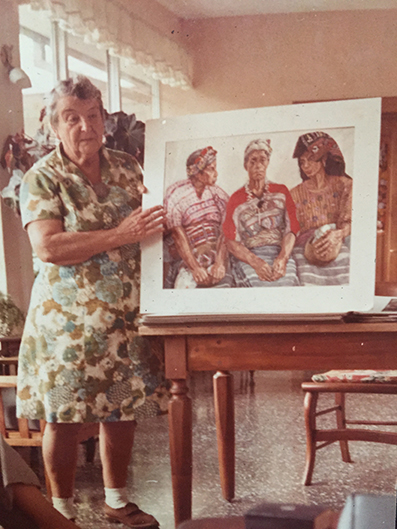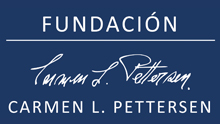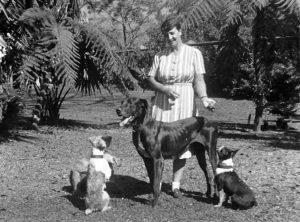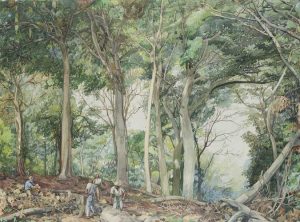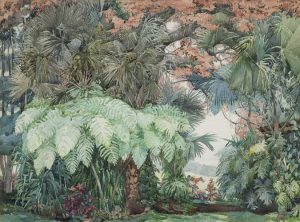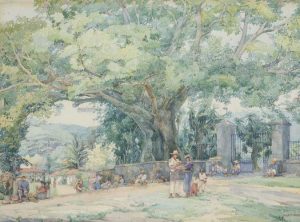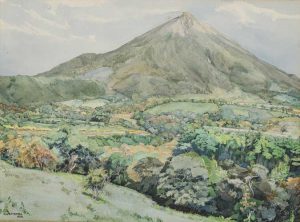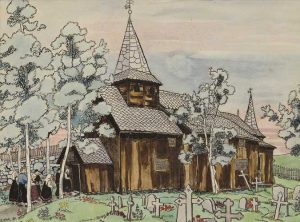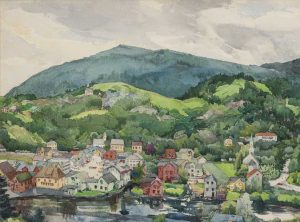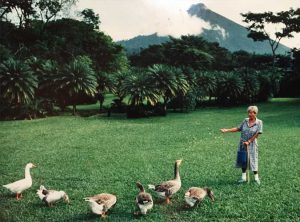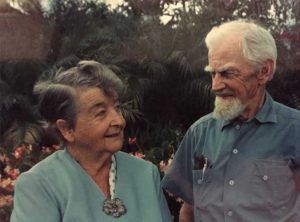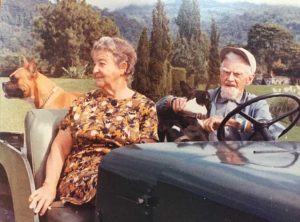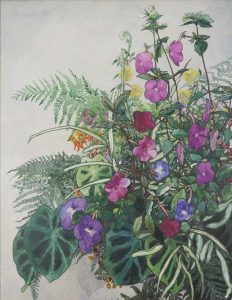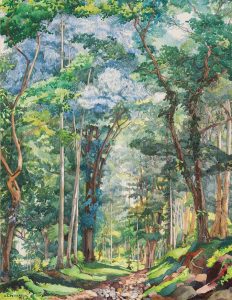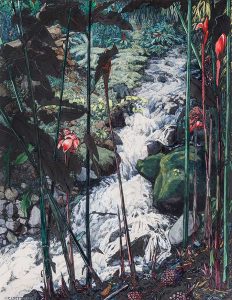HER LIFE

Born on February 6, 1900 in Guatemala City, Carmen Gehrke L. Pettersen grew up in London, England. She studied at the Polytechnic School of Art in London in the late 1910´s, where the curriculum was rigorous and demanding in mastery of drawing and watercolor.
In 1923, Carmen returned to Guatemala and two years later married Leif L. Pettersen (Pete), a Norwegian whom she had met in London. They lived on Finca El Zapote, their coffee and cinchona plantation on the slopes of Fuego Volcano on the South coast of Guatemala. The plantation´s vast tropical gardens were created and landscaped by Pettersen and can be visited today. More information on Zapote Gardens HERE
Pettersen´s life on the plantation was tremendously stimulating and filled with hard work. She helped Pete with managerial aspects, she ran a big household, she homeschooled their only child, Sylvia, and she ran a rudimentary medical clinic for the farm workers. And she still found time to continue to paint.
In the 1930´s and 40´s, Pettersen´s art reflected the soft colors and shadows of the English watercolor technique she was trained in. Soon, however, she transitioned into her unique style to reflect the strong, vibrant colors and deep shadows of tropical landscapes. The body of her work from the 1930´s to the 1960´s consisted of landscapes, florals and portraits. Her preferred medium was watercolor, but she was adept at oils and pen and ink as well.
Life on the farm was very isolated and Pettersen had little exposure to other artists. The family spent many summers in London and Norway where Pettersen sought out museums, galleries and artists to engage in stimulus, learning and artistic creation.

When Pettersen was 70, she became concerned about the rapid changes occurring in the traditional Mayan weavings. Traditional garb was being replaced by cheap Western clothing. Pettersen embarked on a mission to document the traditional costumes of Mayan Indian villages through a pictorial record. In the space of five years she painted the 61 watercolor paintings that comprise the Maya de Guatemala Collection. This was an impressive feat, 61 large watercolors in sixty months. When she failed at convincing her daughter to write the text to accompany her pictures, she enthusiastically embarked on writing her own book, Maya of Guatemala, Life and Dress, filled with information on the weavings and with historical and personal anecdotes about the villages and the Mayan people who create and wear these unique weavings.
Carmen and Pete donated the first edition of the book to the Museo Ixchel, the sales of which were to be the seed fund for the museum to build their own site. The Maya of Guatemala Collection is on permanent display in the museum and is a centerpiece of the museum.
After dedicating six years to Mayan textile paintings, Carmen returned to what she loved best, tropical landscape watercolors. Despite failing health and poor eyesight, Carmen, now a widow continued to live on her plantation and painted some of her finest landscapes.
Carmen passed away in Guatemala City when she was 91.
